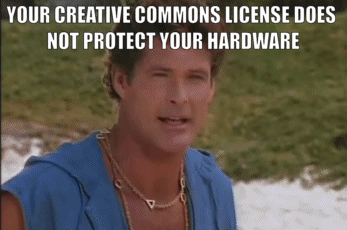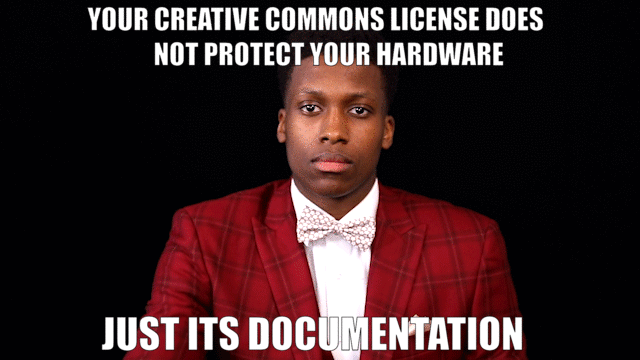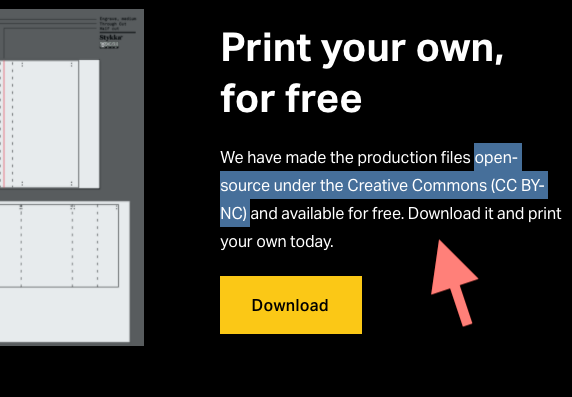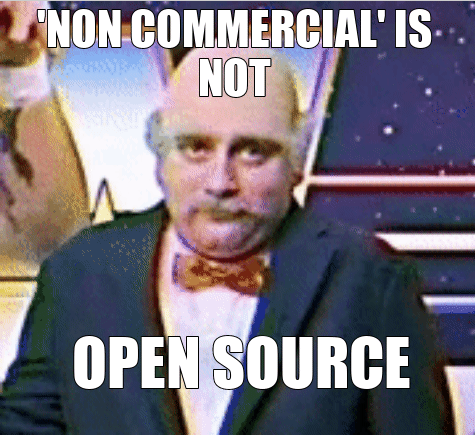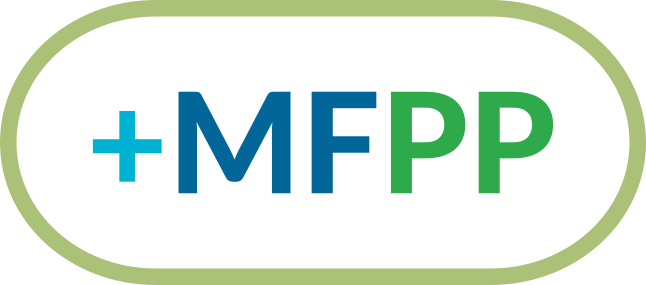Log
Link
opencircularity.info/osh-licenses
[ o°]
*
↑ Video recording. The slides below ↓ have 2 Updates though.
–
Hello,
I am Lars Zimmermann, Designer+Artist, Activist and Educator from Berlin.
.
☞
.
DISCLAMER 1 – I am not a lawyer – This is a talk about legal issues and licenses but I am not a lawyer. This is no legal advice. And I didn’t study this in university. I just tried hard to figure this out and hopefully I got it right.
DISCLAMER 2 – Different countries have different laws – The legal situation is different in every country. What I am going to share here should cover the legal situation in Europe pretty much. I did not look into other countries. But there are reasons to believe that this should somehow match the legal situation in a lot of other countries as well.
DISCLAIMER 3 – Just a fraction – Licensing and property rights is a complex issue and 20 minutes is not enough to give you the full picture. So I had to pick aspects here to focus on.
DISCLAMIER 4 – … – And, sorry, I think i need to state that this talk is somehow given in this mood. But someone IS wrong on the internet! And it is a problem. And I think not just for me.
Ok. Let’s start.
*
Statement: Licensing open source hardware is messy and broken – compared to software.
I am an open source hardware activist and enthusiast. And from my point of view the legal/licensing situation in software is pretty sorted. At least in comparison to Open Source Hardware.
The reason for this is that software is governed by copyright law.
*
1 Copyright Law
Software – like works of art, texts and images – is usually a subject of copyright law.
This makes everything somehow simple. Because you receive your copyright automatically and for free the moment you create something. This means everything copyright based is born closed.
*
Software is born closed
*
So the situation is clear at the beginning: The software IS closed. You need to get active to open it. How? Just pick one of the many existing and ready to use (open source) software licenses or a creative commons license. Those licenses are copyright based. They allow you to make statements about copyrights you own. They make it possible that you allow others to use your work under the conditions you put into your license (for example attribution).
*
2 Patents: Where Functionalities start Copyright ends
Copyright explicitly does not apply to anything that has to do with functionalities. Where functionalities start copyright ends – automatically. This means the moment we enter the realm of hardware we leave the realm of copyright. And this means we loose all copyright based licenses. Copyright based licenses don’t apply to hardware as hardware is mostly functionalities.
→ If you write a book about a time machine the book is protected by copyright law but the machine you describe in the book is not! Everyone can build it. Unless you have patents or design rights registered.
(We still need copyright based licenses for the documentation + design files – the source – of the hardware. But it needs to be clear that the creative commons licenses for example do not say anything about the right to work with the hardware itself.)
*
PATENTS → Closing functionalities requires patents.
Patents are for all things that have functionalities. And patents are fundamentally different from copyright!
The key difference to copyright law is that all things with functionalities are born free → all hardware is born free. Why? Because you don’t receive a patent automatically when you create something. You need to take actions to close the hardware for example by getting a patent. Filing a patent comes with costs (while copyright was for free). You can file patents only for ideas that are new. You can’t patent anything that is already known to the public or was published before – those things are prior art. (But you can remix classic ideas in software or art and your work will be protected by copyright law.)
*
Hardware is born free
*
So the question is then: How to tackle the legal side of making hardware free and open then? It is very easy. Do nothing! Except publishing your work prominently (for example on the web). With this your work becomes prior art and this means it goes into the commons. Everyone can use it forever for free. And no one can patent or close it anymore – including yourself.
But then you can’t tell others what they can do
But this also means you don’t have any exclusive rights to it. And this means you can’t tell others what they can or can’t do with your hardware. There is no way for you to attach conditions to the use of your hardware.
Theoretically, yes, if your invention is new you could file a patent first to get exclusive rights. And then create a public license that allows everyone to use your invention under the conditions of your choice. But this doesn’t seem like something that makes sense – given that filing patents is costly. And to nobodies surprise there is no common public license to use in this situation.
UPDATE: There are two standard licenses you can use when you have filed a patent or design rights – the CERN OHL and the TAPR OHL. These licenses are made to make claims about those rights. I didn’t mention them in the talk because only a few people know about them so I did not count them as a “standard”. But the Open Source Hardware Certification process of the Open Source Hardware Association highlight them quite prominently which contributes to their notoriety and standard use. |
So it is easy. Publish it. And do nothing else. And embrace the fact that no one – including yourself (!) – can dictate to anyone if and how the hardware is used.
But the truth is. This doesn’t seem to be easy for people – to accept and therefor understand… I’ll get to it in a moment.
*
3 Design Rights & Utility Models
I just want to mention that in Europe & Germany we have more property rights that apply to hardware – for example “design rights” and “utility models”.
Design Rights – protect “how something looks”
Utility Models – protect how something works/or what it does (= cheaper but weaker version of a patent)
They are both closer to the patent because: You have to file them actively and the invention needs to be new. So hardware is still born free (tiny exception: for design objects you have “unregistered design rights” for one year after the publication of the design. Within this year you can transform these unregistered design rights into registered design rights. So in a way the design is not really free during the first year after it was published.)
If you want to get deeper into those other property rights click here.
*
4 Making Hardware open – it’s easy!
I said it twice already. Making hardware open from a legal point of view is very easy. Just publish it and do nothing else. This will do the trick. You don’t need a license to make the hardware open.
(Of course you still need a copyright based license to share your editable documentation/design files to make proper open source hardware and make it easy for others to use and build upon your work.)
?
How to deal with the fact that you can’t tell others what they can do with your design and what not? That there is no Copyleft for example? Simply live with it! And design your (business) strategy around this.
If people would do (understand) that we would have a healthy open hardware licensing situation. The problem is many people don’t.
*
5 The problem is: For people it’s not easy
The problem is: People don’t like this. It just doesn’t click. Although it is so simple it seems not to be intuitive. So instead of things done right you find a lot of weird things out there. Things are broken – often.
I see two main issues:
1. People (think they can) use copyright based licenses for their hardware ideas.
2. They even use copyright based licenses with “Non Commercial” clauses and call their work “Open Source” (-‸ლ).
*
5.1 Copyright based licenses for hardware
You probably have seen this yourself. People use copyright based licenses (usually creative commons licenses) next to their hardware documentation in a way that creates the impression that this license is actually protecting the hardware. (They are usually under this impression themselves.)
This is even an issue on so called “maker platforms” that should know better.
→ Random Example on Instructables (Screenshot with highlighted license)
→ Random Example on Wikifactory (Screenshot with highlighted license)
Tell me! As an outsider without any knowledge. Would you have thought that this whole technical design is protected by this license? How would you interpret this? You’d probably think – yes, it is, right?
If you upload a design on Instructables you will probably think that your “invention” is protected. But it is not.
I looked around on the Instructables website. There is only one source I could find where they actually explain that the creative commons license is about the documentation not about the hardware design itself. This bit of information is in the last paragraph of the article. The article is 11 years old. And collected 700 clicks since it was published. And it has 4 comments. And some of them show that the article was not really understood by the commenter.
→ Link article (Screenshot with highlights)
!
THIS IS A PROBLEM! Because it creates false expectations among content creators and more importantly fosters false motivations! People don’t understand how sharing hardware design solutions on the web really works and how the law supports it (actually quite strongly). And this means that a lot of its true and legally existing collaborative potential is locked right now! And not executed and nurtured.
These platforms need to be fixed! They need to communicate very clearly to their content creators and audience that the licenses are about the documentation – not about the shared design itself! Everyone must understand that the design is free for everyone once published (unless other property rights were filed which is usually not the case nor possible because the designs aren’t really that new.)
Maybe the platforms should write something like this and link to a short explainer about the basics of openness and licenses:
*
*This documentation is shared under the CC-BY license. The hardware itself is not. (Explanation)*
*
5.2 “Non Commercial” Open Source
And there is one very weird and highly problematic form of the thing above. Sadly you see this super often:
People publish and promote their hardware designs as “Open Source under a Creative Commons Non Commercial license”.
This is wrong on so many levels. And those levels start to interact with each other which creates bizarre and very harmful effects! I don’t know how this came to be but now it is widespread especially in the maker community or people close to it. Something needs to be done.
I created a couple of months ago an extended FAQ on this.
I’ll go with you through the intro and question –7– and question –8– to show you a bit of the magnitude of the problem.
(If you only read this and not listen to the talk jump to the → FAQ and scan the intro and read the answer to Question 7 and Question 8 – Scope Expl✹sion! – and then come back here.)
–
These two things:
1. Misuse of copyright based licenses for hardware designs and
2. sharing as “Open Source under a Non Commercial license”
are creating really big and weird problems in the world of licensing open source hardware. You will barely find someone who knows what is really the case. The majority will believe in one or both of these issues I just presented. And this locks the potential of open source hardware. No one really understands what is possible and what not and how to design a working and satisfying (business) strategy for this. So…
Let’s do something about it. ◠(ツ)╯
*
6. Join the campaign!
*
Oh lord. This is broken. We need to fix it. We need open source hardware done right. Because we should care for open hardware. It could be a great tool to help us to deal with the problems of our future – climate change, biodiversity collapse and resource exhaustion.
I created a campaign and launched it this morning. It is a proposal for a collective action. We can work together decentralized to fix things. Let me show you the campaign:
→ The Campaign
︵ヽ(`Д´)ノ︵ ┻━┻
*
7. (Reprise) And One Fix At The Time
If we did this (the campaign) successfully the problem with licensing open source hardware is still not solved completely. But an important step would have been made.
Why not solved completely?
As I explained above: The problem is that in software the situation is always clear – there IS copyright. And there is a standard way to deal with it and make it open – open source software licenses.
But in hardware it is not clear IF THERE ARE any property rights. The hardware could be free or not. You just don’t always have a way to know this. And regardless what is the case there is no standard way to signal to the outside world what is the case. There is no standard way to signal if nothing was filed. And there is no standard way to open something again that has received protection.
I don’t know how a standard way could look like though.
At Mifactori we do this in our own way – we published a “Public Promise” that we have not and will not register any special protection for our hardware design work.
*
Logo of Mifactori’s Public Promise on Design Rights Vs 1.0
*
But I am not sure if this is an idea for a standard way. What should we do?
UPDATE: 2 weeks after I gave this presentation I saw a the tweet below ↓ by the Open Source Hardware Association with their attempt to solve this – the Open Source Hardware Facts Generator. It was launched just a couple of months ago and I had not seen it yet. Looks good. (This somehow works because the CERN OHL makes claims about any rights someone might have. You still don’t know if there are any rights registered which is the aim of our approach above. But you know that you can work with the hardware regardless.) Generate your SVG now! 🙂 |
*
Thank you
That’s it from me. Thanks for listening/reading.
My Twitter is @bricktick | I work here on Open Source Circular Design.
One more time the link to this page:
opencircularity.info/osh-licenses
[ o°]


